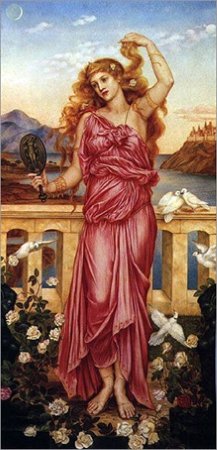3.1 Soneto CLXVI, “Mientras por competir con tu cabello” – Luis de Góngora
7 min read•june 18, 2024
Sylvia Rodriguez
AP Spanish Literature 💃🏽
24 resourcesSee Units
Spanish sonnet Soneto CLXVI, popularly known as "Mientras por competir con tu cabello," was composed by one of the most significant authors of Spanish Baroque literature, Luis de Góngora.
Context of "Mientras por competir con tu cabello"
Author Background
Luis de Góngora (1561-1627) was a Spanish Baroque poet and one of the leading figures of the Spanish Golden Age literature. He was known for his complex and elaborate style, characterized by the use of metaphors, hyperbole, and allusions to classical literature.

Image Courtesy of Spain is Culture
Time and Place
📜Historical: The sonnet was created in Spain during the 16th and 17th centuries, a time of great artistic and cultural advancement. This was a period of exploration, conquest, and colonization as Spain grew its empire and established itself as a major force on the world stage.
🗺️Geographic: With references to things like rivers, mountains, and valleys, the sonnet depicts Spain's natural scenery. Góngora frequently found inspiration in the Andalusian region, which is renowned for its untamed beauty and diverse culture.
Societal Context
👑Political: Spain was ruled by a centralized monarchy that was a part of the Habsburg dynasty during Góngora's period. Spain was a significant player in European history and took part in wars like the Thirty Years' War and the Eighty Years' War, both of which had profound political and social effects.
🧑🏽🤝🧑🏻Socio-economic: Góngora was a member of the Spanish nobility and was supported by powerful and affluent people. The aristocracy frequently praised his poetry and used it to advance their social status and intellectual debate.
🎭Cultural: The Spanish Baroque period's cultural ideas and beliefs are reflected in the sonnet. It exhibits Góngora's use of language, his creative application of metaphor, and his investigation of ideas like love, beauty, and the fleeting nature of human existence.
Need to Know About "Mientras por competir con tu cabello"

Image Courtesy of Otras Cosas
Characters
The poem doesn't have characters. It is a lyric poem meant to reflect the poet's feelings. The themes of love, beauty, and the awareness of mortality dominate the poem's entire framework. Góngora emphasizes the fleeting aspect of human beauty by using vivid and intricate words to express his enthusiasm for the beloved's hair and making similarities to natural components. The poem is distinguished by its complex wordplay and rich imagery, which capture the aesthetics and writing style of the Spanish Baroque era.
Literary Terms and Devices
- Apóstrofe: The poem used apóstrofe to refer specifically to the beloved's hair in order to convey appreciation and adoration.
- Anáfora: To emphasize the speaker's admiration of the beloved's hair, the phrase "Mientras..." is repeated at the beginning of several lines.
- Rima consonante: The poem adheres to a tight rima consonante scheme, with repeated consonant sounds forming a pleasing structure at the ends of several lines.
- Cuarteto: The poem's quatrain (four-line stanza) structure allows for a condensed portrayal of the speaker's feelings.
- Terceto: The poem occasionally uses tercetos, which are three-line stanzas, to temporarily change the rhythm and organization.
- Endecasilabo: The sonnet's formal structure and melody are principally achieved through the use of endecasilabos, which are verses with eleven syllables.
- Cromatismo: The poetry creates rich visual imagery and enhances the sensory experience by using color imagery to describe the beloved's hair.
- Metáfora: The comparison of the beloved's hair to natural elements is frequently used to allude to the beauty and charm of the hair. Some examples of what the speaker compares the woman's hair to is the sun, stars, gold, and silk.
- Símbolo: The beloved's hair represents grace, beauty, and the fleeting nature of life.
- Gradación: The poem makes use of gradación by using a sequence of ever more beautiful descriptions to highlight the beloved's hair's fleeting beauty.
- Enumeración: To demonstrate the range of comparison and to highlight the beloved's hair's unparalleled beauty, the poem describes different natural things and aspects.
- Asíndeton: Asíndeton is used to create a quick and fluid rhythm in the poem by leaving out conjunctions.
- Hipérbaton: The poem employs hipérbaton by changing the usual word order to emphasize certain points and add to the poem's artistic quality.
Summary of "Mientras por competir con tu cabello"
Soneto CLXVI exemplifies these characteristics of Baroque poetry. The poem's elaborate metaphors and hyperbole create a sense of grandeur and intensity, while its focus on the beauty of a single object reflects the Baroque concern with individual detail and ornamentation. Additionally, the poem's allusions to classical mythology and literature demonstrate the Baroque fascination with the past and its emphasis on the power of cultural heritage.
This sonnet also describes the beauty and allure of a woman's hair. The poem uses elaborate metaphors and hyperbole to convey the speaker's admiration for the woman and the power of her beauty. It is worth noting that Soneto CLXVI's focus on the beauty of a woman's hair was a common motif in Renaissance and Baroque poetry. Hair was often used as a symbol of feminine allure and was seen as a physical manifestation of a woman's inner beauty. In this sense, the poem can be read as a celebration of female beauty and a tribute to the power of love and desire.
However, the poem's use of hyperbole and extravagant metaphors also serves to underscore the transience of beauty and the inevitability of death. The speaker compares the woman's hair to objects that are fleeting or ephemeral, such as gold or the fleeting beauty of a rainbow. In doing so, he suggests that even the most beautiful things are subject to decay and impermanence.
Furthermore, the poem's title, "Mientras por competir con tu cabello," can be translated as "While striving to compete with your hair." This suggests that the speaker sees the woman's beauty as something to be admired and revered, but also as a challenge to his own artistic and literary abilities. In this sense, the poem can be read as a reflection on the role of the artist in capturing and preserving the beauty of the world.
Themes in "Mientras por competir con tu cabello"
El tiempo y el espacio
The poem explores time and space, as well as the fleeting quality of beauty. In order to emphasize the brief duration of human existence and the unavoidable change that time brings, Góngora contrasts the image of the beloved's hair with scenes from nature, such as the sun and rivers.
El carpe diem y el memento mori
The poem incorporates the concepts of memento mori and carpe diem, or "seize the day" and "seize the moment." The beloved's hair serves as a metaphor for Góngora's advice to the reader to see and treasure beauty in the present while also accepting the passing of time and the transience of earthly joys.
El amor y el desprecio
The poetry combines love and contempt. Despite the speaker's admiration for the beloved's hair, there is also a sense of unrequited love and a tinge of bitterness. The speaker's deep respect and the underlying frustration of unattainability are contrasted.
La trayectoria y la transformación
The poem examines the development and evolution of beauty. The evolution of Góngora's descriptions—from golden to dark to silver—reflects life's various stages and the inevitable deterioration of physical attraction. The beloved's hair becomes a representation of the fleeting nature of beauty and the unavoidable change that comes with time.
Analysis and Significance of "Mientras por competir con tu cabello"
Góngora uses rich vocabulary and stunning imagery to produce a profound meditation on human existence and the transient nature of beauty in Soneto CLXVI. The poem challenges listeners to consider the passing of time, the certainty of death, and the fleeting nature of earthly joys. Góngora conveys the essence of the beloved's hair as a symbol of attraction, generating a sense of longing and appreciation. He does this through rich metaphors and detailed language. A beautiful tapestry of feelings and thoughts is fashioned from the intertwining themes of time, love, and transformation. This sonnet is a testament to Góngora's lyrical talent and his capacity to communicate difficult ideas simply and effectively.
Overall, Soneto CLXVI offers a complex and nuanced exploration of the themes of beauty and desire, as well as mortality and transience. The poem highlights the power of beauty to inspire desire and admiration, while also recognizing the inevitability of decay and death. This tension between the timeless and the ephemeral is a hallmark of Baroque poetry and reflects the larger cultural and artistic concerns of the time.
Soneto CLXVI is considered one of Góngora's most famous poems and a masterpiece of Spanish Baroque literature. The poem's complex style and elaborate metaphors have inspired countless imitations and adaptations in Spanish and other languages. The poem also reflects the Baroque concern with the power of beauty and the transience of life, making it a significant work in the literary and cultural history of Spain.
Browse Study Guides By Unit
🏇Unit 1 – La época medieval
🛳Unit 2 – El siglo XVI
🖌Unit 3 – El siglo XVII
🎨Unit 4 – La literatura romántica, realista y naturalista
🤺Unit 5 – La Generación del 98 y el Modernismo
🎭Unit 6 – Teatro y poesía del siglo XX
🌎Unit 7 – El Boom latinoamericano
🗣Unit 8 – Escritores contemporáneos de Estados Unidos, y España

Fiveable
Resources
© 2025 Fiveable Inc. All rights reserved.